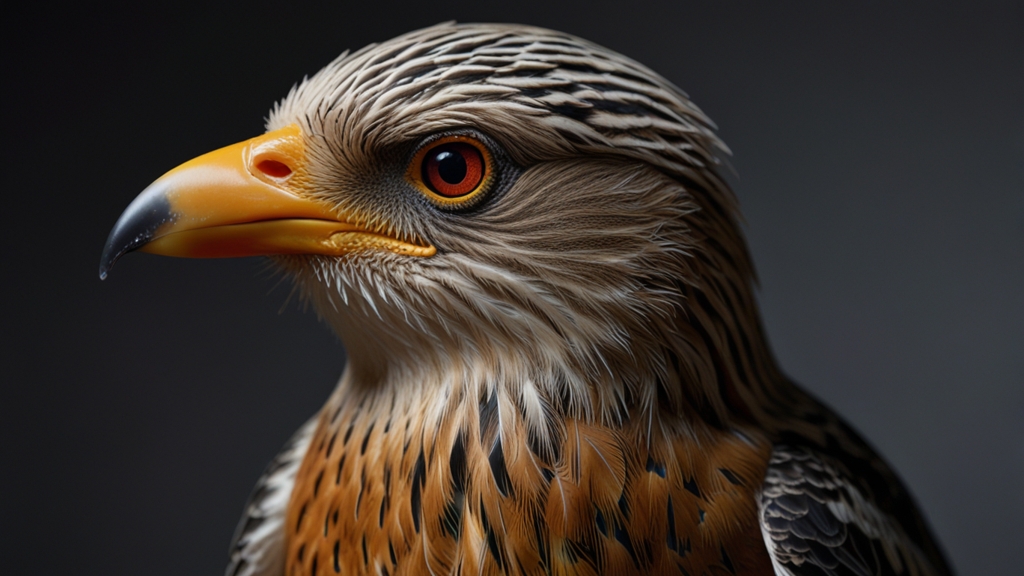The Secret Lives of Birds: What They Don't Want You to Know
Birds, the ever-majestic creatures of the sky, have long fascinated humans with their graceful flight and melodic songs. Yet, beneath their charming exteriors lies a world shrouded in mystery and misconceptions. In this exposé, we delve into the hidden aspects of avian lives that these feathered friends might prefer to keep under wraps.
The Art of Deception
While many associate birds with sincerity and song, not all is as it seems. Some species are expert deceivers, using cunning tactics to ensure their survival. Take the cuckoo bird, for instance. Known for its brood parasitism, the female cuckoo lays its eggs in the nests of unsuspecting host birds. The host birds, unable to distinguish the intruder’s egg from their own, end up raising the cuckoo chick, often at the expense of their offspring.
It’s a clever disguise, one that allows the cunning cuckoo to thrive without putting in the effort of raising its young.
Complex Social Dynamics
Beyond their enchanting songs and aerial acrobatics, birds possess intricate social structures that rival those of human societies. Many bird species form tight-knit communities with well-defined hierarchies. These flocks operate with a blend of cooperation and competition, where alliances are formed, and rivalries brew.
For example, the social structure of crows is incredibly complex. They exhibit advanced problem-solving abilities and even engage in acts of vengeance. If a crow feels wronged, it can remember the face of its adversary and warn other crows of the threat. These behaviors, often veiled from human eyes, reveal a layer of sophistication in bird interactions that is both captivating and surprising.
Navigational Prowess
One of the most remarkable aspects of bird life is their migratory behavior. Birds undertake incredible journeys, often spanning thousands of miles, to reach their breeding or feeding grounds. But how do they manage this seemingly impossible feat? The answer lies in their ability to navigate using a combination of the Earth's magnetic field, the position of the stars, and even visual landmarks.
Studies have shown that birds possess specialized cells containing magnetite, a magnetic mineral that allows them to sense magnetic fields. This extraordinary ability helps them maintain their course even when flying across vast, featureless oceans. It’s a navigation system so sophisticated that it puts our GPS technology to shame.
The Language of Birds
Birdsong is more than mere background music to our lives; it’s a complex form of communication. Birds use their vocalizations to convey a range of messages, from marking territory to attracting mates. Some species even have regional dialects, much like human languages.
Researchers have discovered that birds like the zebra finch can learn and adapt their songs based on their social environment, demonstrating a level of cultural transmission once thought exclusive to humans.
Moreover, certain birds are capable of mimicking sounds from their surroundings, including human speech. The African grey parrot is a prime example, known for its remarkable ability to replicate words and phrases. This talent for mimicry can be both entertaining and extraordinarily perplexing, blurring the lines between bird and human communication.
Environmental Impact and Adaptation
Birds are highly adaptive creatures, able to thrive in varying environments, from dense forests to urban landscapes. However, this adaptability is often a double-edged sword. While some species flourish in human-altered environments, others face the threat of habitat loss and climate change.
Urban-dwelling birds like pigeons and sparrows have developed ingenious ways to exploit human resources. Pigeons, originally cliff-dwellers, have adapted to the skyscrapers and ledges of cityscapes. Similarly, sparrows have learned to forage from the waste produced by human activities, a testament to their resilience and adaptability.
Conversely, many woodland and migratory birds struggle to cope with deforestation and changing climate patterns. These challenges pose significant risks to their survival, reminding us of the delicate balance between development and conservation.
Their adaptability is a testament to their resilience, yet it also underscores the pressing need for us to address environmental challenges that threaten their existence.
Conclusion
The secret lives of birds are a testament to the intricate and wondrous complexity of nature. From their deceptive strategies and social intricacies to their unparalleled navigational skills and adaptive prowess, birds continue to reveal layers of mystery that captivate and inspire. As we uncover these secrets, we gain not only a deeper appreciation for these feathered marvels but also a profound sense of responsibility to protect and preserve the natural world they inhabit.
So next time you hear the sweet melody of a songbird or catch a glimpse of a soaring eagle, remember that there is more to their lives than meets the eye. Each chirp, flight, and interaction carries a story waiting to be discovered, a secret world unfolding just beyond our perception.






